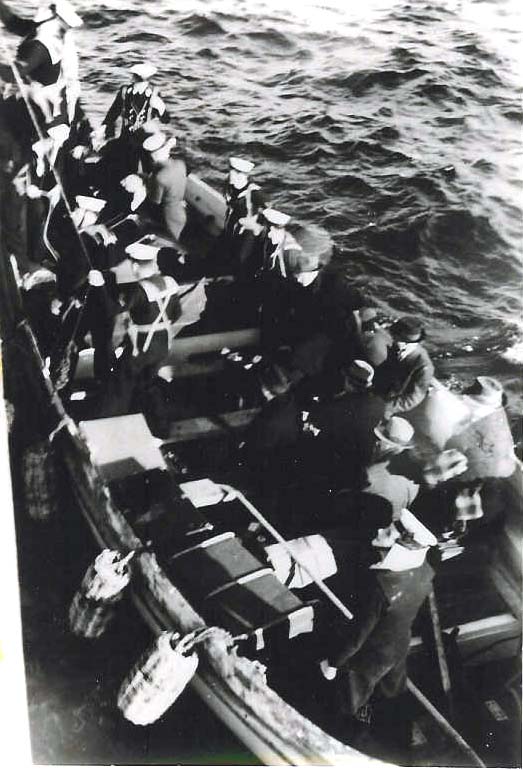Tuesday 30 January 1940
 |
| Soviet artillery during the Winter War. Note the soldiers' dark uniforms. |
The Soviets, however, have plenty of men to spare. They are continuing their meticulous preparations for an offensive on the Karelian Isthmus, with massive and unceasing artillery barrages. At Lähde, 10 km east of Summa, the artillery pounding is wrecking the Mannerheim Line.
The Kremlin has completely lost interest in its troops further north such as the 54th Rifle Division, which has been surrounded by Finnish 9th Division. Essentially, the divisions that began the war have been written off as losers that are now on their own. The war has become a battle of attrition which the Soviets know they cannot lose.
European Air Operations: Strong Luftwaffe raids along the British coast continue. A Heinkel He shots short down near the Northumbrian coast by RAF fighters. The Heinkels attack shipping in the Great Yarmouth roadstead. Operations on both sides are hampered by poor visibility.
Battle of the Atlantic: U-55 (Kapitänleutnant Werner Heidel), which has had an eventful patrol, attacks British convoy OA-80G 50 miles off Lands End at 07:00. First, U-55 sinks 5,026-ton British tanker SS Vaclite and evades British retribution (all 35 crew survive). After stalking the convoy some more, U-55 sinks 5,085 ton Greek freighter SS Keramiai. All 28 crew survive.
This time, however, Heidel has pressed his luck too far. British destroyers HMS Valmy, HMS Whitshed and French destroyers Valmy and Guépard, along with a Sunderland Short flying boat from No. 228 Squadron attack the U-boat. They damage the U-boat, and it surfaces long enough to allow its crew to escape. Kpt. Heidel, an aggressive (too aggressive) commander, goes down with the ship (perhaps while scuttling it personally), but everyone else, 41 of his crew, survives.
The Luftwaffe sinks British freighters Giralda, Highwave, Bancrest, and Voreda.
In a case of friendly fire, German torpedo boat Iltis sees a submarine 50 miles north of Wilhelmshaven and rams it. U-15 (Kapitänleutnant Peter Frahm) goes down with all 25 hands lost.
The British at Gibraltar release US freighter Cold Harbor.
 |
| The Baltimore News-Post, 30 January 1940. |
Holocaust: The Reich's two main groups of victims receive attention today. Reinhard Heydrich orders more deportations of Jews from the Reich territory to the occupied rump Polish state at Lublin. Heinrich Himmler also authorizes the deportation of 30,000 Gypsies.
 |
| The Vaclite, sunk by U-55 on 30 January 1940. |
January 1940
January 1, 1940: Finns Carve up the SovietsJanuary 2, 1940: Finnish Counterattacks Continue
January 3, 1940: Soviets Trapped
January 4, 1940: Soviet Breakout Attempts Fail
January 5, 1940: Dicing Up the Soviets
January 6, 1940: Soviet 44th Division Runs
January 7, 1940: Shakeup in Soviet High Command
January 8, 1940: Ratte Road Battle Ends
January 9, 1940: British Submarines in Peril
January 10, 1940: Mechelen Incident
January 11, 1940: Finns Surround More Soviets
January 12, 1940: New Soviet Attacks at Taipale
January 13, 1940: Fall Gelb Postponed
January 14, 1940: Japan's Government Falls
January 15, 1940: Soviets Prepare More Carefully
January 16, 1940: German Atrocities Uncovered
January 17, 1940: Bletchley Park in Action
January 18, 1940: New Hope for Allied Shipping
January 19, 1940: Finnish Attacks at Salla
January 20, 1940: Churchill Urges Cooperation
January 21, 1940: Asam Maru Incident
January 22, 1940: Dissension Within British Government
January 23, 1940: Dissension in South Africa
January 24, 1940: NKVD Blocking Detachments
January 25, 1940: Auschwitz Site Selected
January 26, 1940: Millionaire Bunker Destroyed
January 27, 1940: U-20 Sinks Four Ships
January 28, 1940: Softening Up the Finns
January 29, 1940: Moscow Willing to Talk
January 30, 1940: Hitler Throws Down the Gauntlet
January 31, 1940: Timoshenko Is Ready
2019













